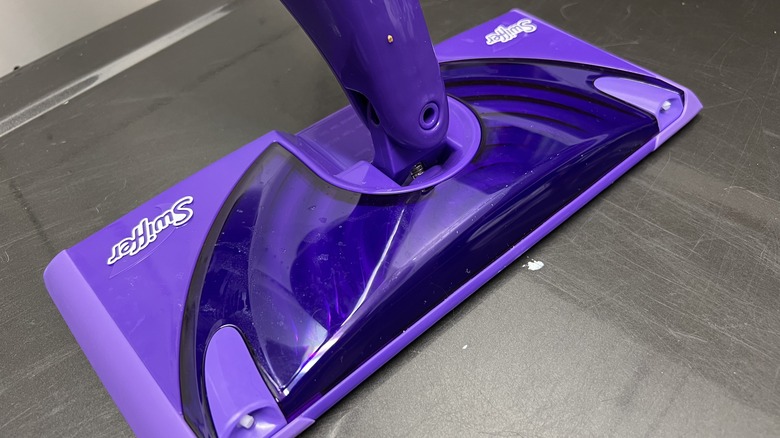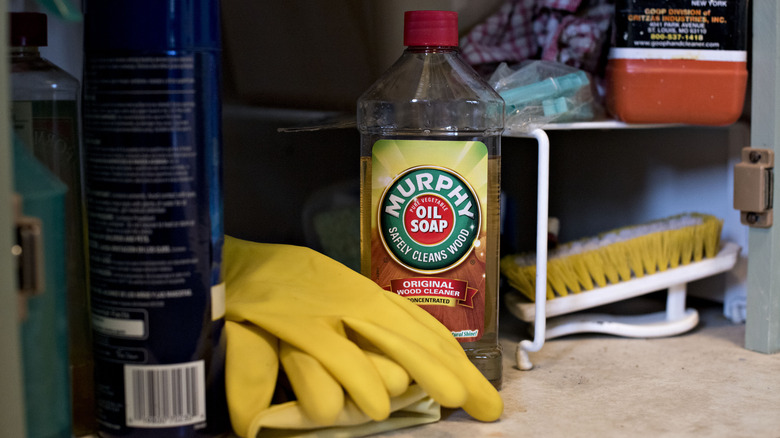Refill Your Swiffer On A Budget With This Murphy's Oil Soap Hack
We may receive a commission on purchases made from links.
Swiffer WetJets have made mopping much easier and more convenient. Rather than hauling out a heavy bucket, refilling it every time the water gets dirty, and then dealing with a dirty mop head, you can just use this ingenious gadget. It dispenses a cleaning solution directly from the mop, negating the need to haul around a bucket, and the pads can be tossed out as soon as they're dirty, nixing the need to wash mop heads or worry about germ buildup. However, there is one obvious downside to the WetJet — buying the cleaning solution can get pretty expensive.
Depending on how often you use this cleaning tool, the bottle of solution can last you anywhere from a few weeks to a month. This can cost $7 in places like Target, and as we all know, the cost of cleaning supplies can add up. Luckily, you can DIY your own solution to make it a little more affordable, and all you need is Murphys Oil Soap. Rather than dishing out nearly $10 a bottle, you can make the Murphys solution last for years before having to get more product. Here's how to do it.
How to create a DIY Murphy's Oil Soap Swiffer replacement
The first thing you need to do to pull this hack off is to actually pull off the cap of the WetJet cleaning solution. It's notoriously difficult to remove, which is why people usually buy new refill bottles. However, you can easily pop it off with a set of pliers. Just gently squeeze them on the cap and twist. Once it's removed, add 2 teaspoons of Murphys Oil Soap with ½ cup vinegar and 1 teaspoon of Tee Tree essential oil. The Murphy's acts as the soap, the vinegar as the solvent, and the tee tree as the natural antiseptic. Then, fill the rest of the bottle with warm water, put the cap back on with your hand, and shake it well to mix the contents.
Pop it back onto your Swiffer, and you have a much more affordable cleaning solution you can use! However, please keep in mind this is best used for finished wood, linoleum, and tile surfaces. You want to avoid using it on any stone or unfinished wood surfaces as it can stain them.

